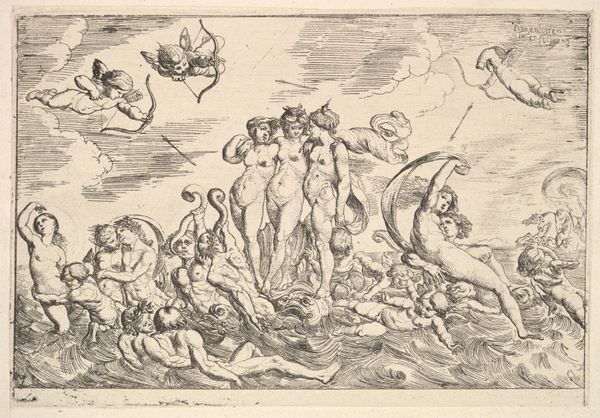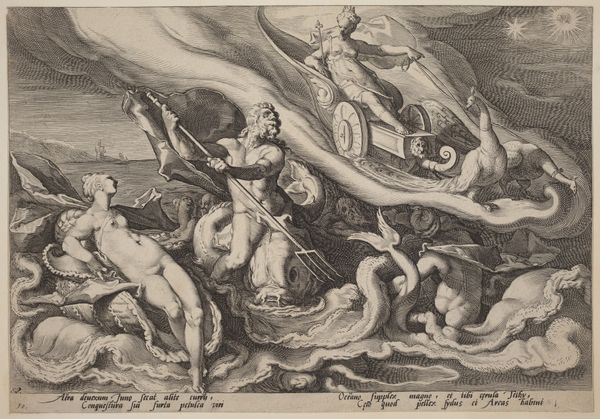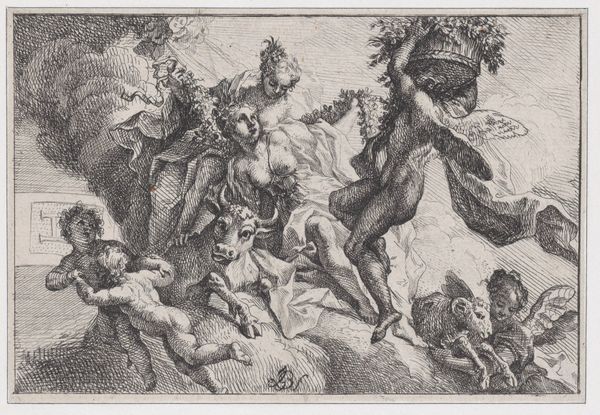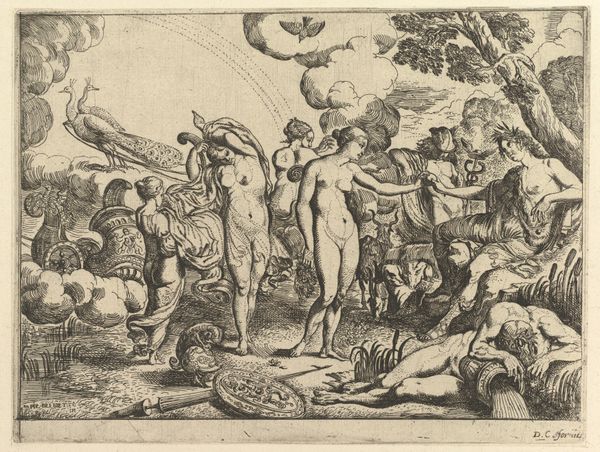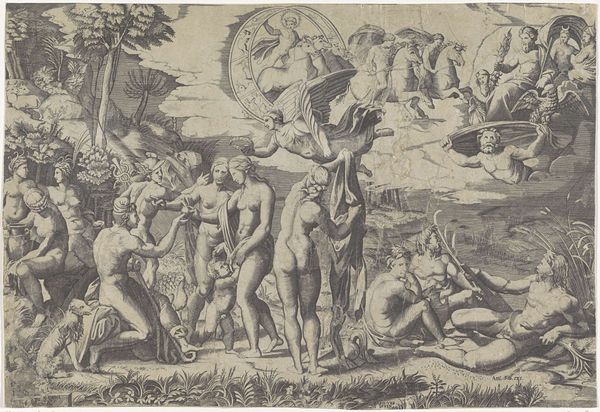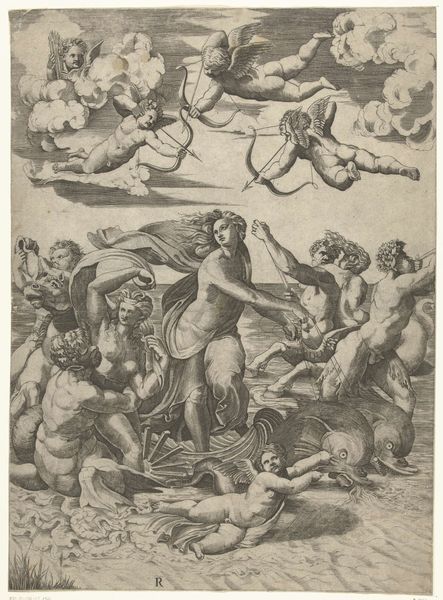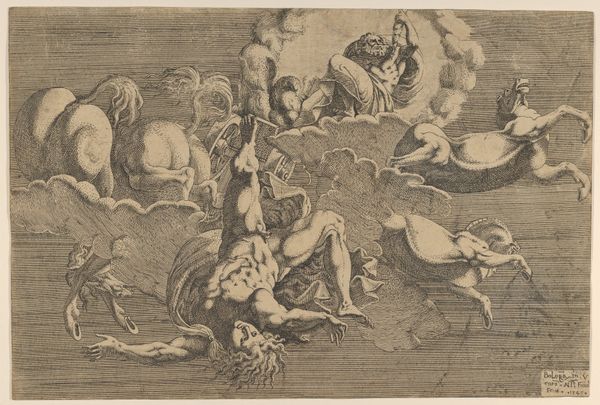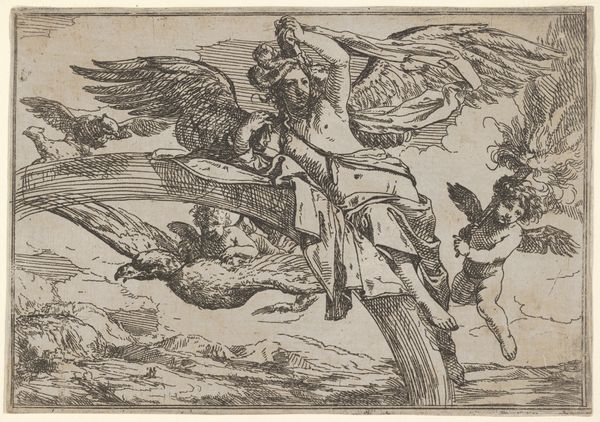
drawing, print, engraving
#
drawing
#
allegory
#
baroque
# print
#
figuration
#
line
#
history-painting
#
nude
#
engraving
Copyright: Public Domain
Curator: Pierre Brebiette, a French artist of the Baroque period, is credited with this work titled "Bacchanal." Likely completed between 1610 and 1642, it's presented to us as an engraving, a testament to the artist's skill with line and composition. Editor: My first impression is one of organized chaos. Figures spilling out of a turbulent sea, strange creatures… it feels sensual yet imposing, even with its small scale. Curator: Brebiette’s involvement in French court circles significantly influenced his allegorical and mythological subject matter, very much in line with what we see across France during that period. Prints like these often served as political tools, disseminating ideals. Editor: The gender politics seem particularly interesting. These rather passively posed female figures seem juxtaposed with hyper-masculine strength embodied in the bestial characters on the right. Is this an intentional portrayal of subjugation? Curator: Consider the Bacchanal's history. It comes from a tradition glorifying wine, fertility, and ecstatic liberation—typically spaces dominated and defined by men, institutionally. However, many have examined depictions of Dionysus and related figures through a lens that emphasizes freedom and transformation, not necessarily straightforward male dominance. Editor: I suppose what complicates this are the bodies themselves. The etching's rendering of flesh – this exaggerated musculature in tension with the idealized forms. I wonder if this work had more progressive goals, perhaps to reclaim the body beyond purely patriarchal modes of interpretation? Curator: That's where we see the brilliance in examining the broader historical scope. We are invited to challenge pre-conceived notions and assess what we consider progressive within its original societal confines. The proliferation of the printing press itself encouraged broad readings and wide interpretations. Editor: So, understanding this artwork is less about extracting a single "truth" and more about recognizing a spectrum of possibilities. That certainly highlights its potential to start an intriguing dialogue. Curator: Exactly. The Bacchanal opens a historical window, doesn’t it? Showing us not just what the period was, but revealing complexities that resonate with today's concerns. Editor: Definitely food for thought. The dialogue between the artwork and its social setting invites deeper reflection and critical discourse for contemporary art history.
Comments
No comments
Be the first to comment and join the conversation on the ultimate creative platform.

